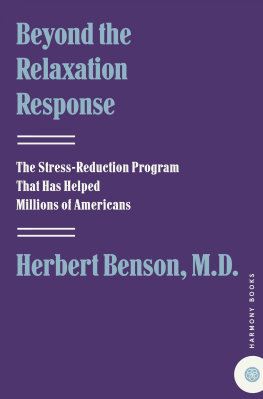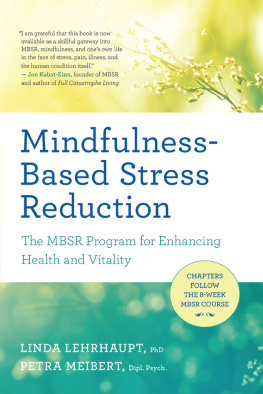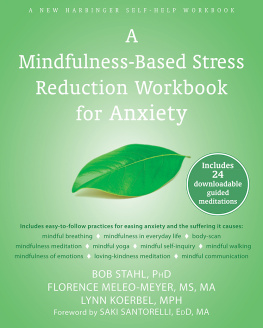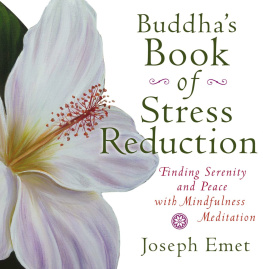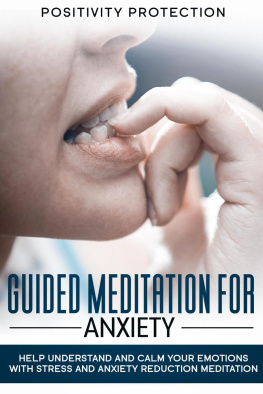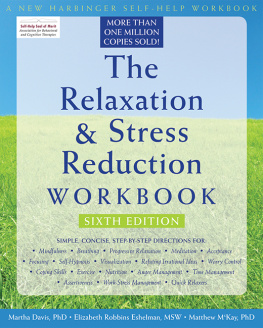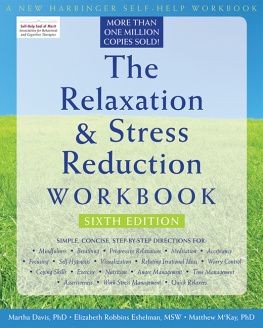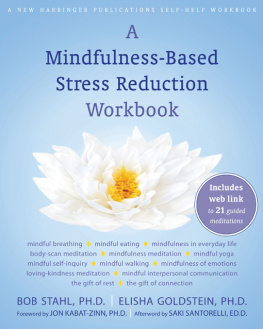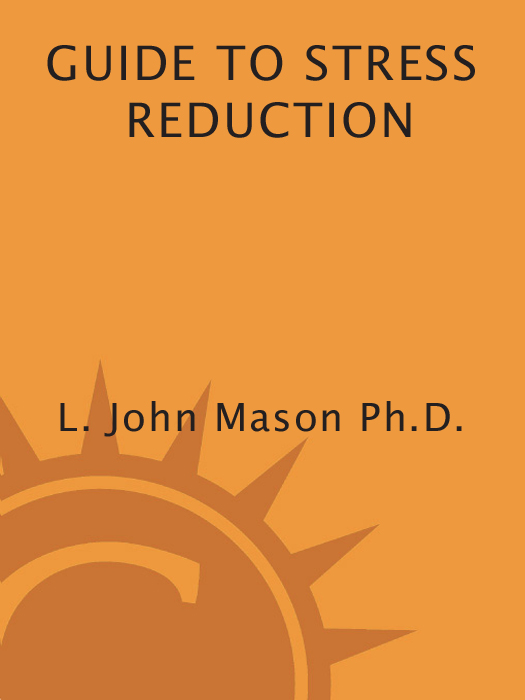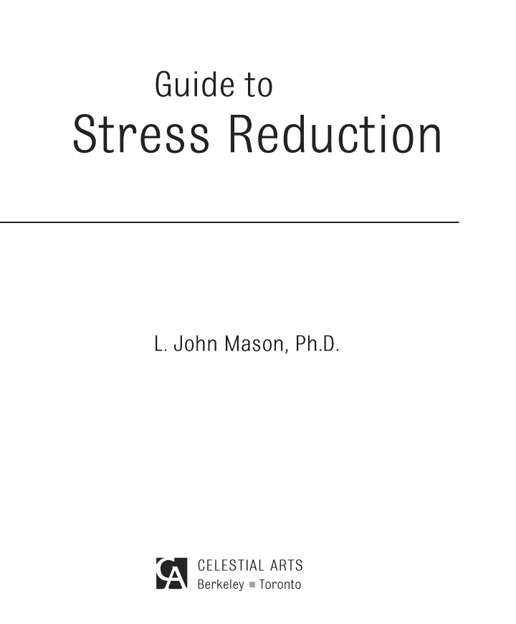Copyright 1980, 1985, 1997, 2001 by L. John Mason, Ph.D.
All rights reserved. No part of this book may be reproduced or transmitted in any form or by any means, electronic or mechanical, including photocopying, recording, or by any information storage or retrieval system, except for brief review, without the express permission of the publisher.

Celestial Arts
P.O. Box 7123
Berkeley, California 94707
www.tenspeed.com
Distributed in Canada by Ten Speed Press Canada, in the United Kingdom and Europe by Airlift Books, in New Zealand by Southern Publishers Group, in Australia by Simon & Schuster Australia, in South Africa by Real Books, and in Singapore, Malaysia, Hong Kong, and Thailand by Berkeley Books.
PERMISSIONS:
Holmes and Rahe Social Readjustment Rating Scale from Journal of Psychosomatic Research, Vol. 11, pp. 21318. Copyright 1967. Pergamon Press, Ltd. Reprinted with permission.
Secondary Gains from Getting Well Again by O. Carl Simonton, M.D., Stephanie Matthews-Simonton and James Creighton. Copyright 1978. Published in hardcover by J. P. Tarcher, Inc., Los Angeles. Used by permission of Bantam Books, Inc.
Library of Congress Cataloging-in-Publication Data
Mason, L. John, 1950
Guide to stress reduction / L. John Mason.
p. cm.
Includes bibliographical references ().
eISBN: 978-0-307-81542-2
1. Stress (Psychology) 2. Relaxation. I. Title.
BF575.S75 M35 2001
155.9042dc21
2001028233
Original edition published by Peace Press, 1980.
Celestial Arts edition First Printing, 1985.
v3.1
To my mother and my father,
and all those who wish to take
responsibility for their own health.
Contents
Acknowledgments
A SPECIAL THANKS to all the people at Celestial Arts and Ten Speed Press for their support and encouragement. Especially the late David Hinds, for bringing my first book to Celestial Arts and his appeal for me to write the second book, Stress Passages: Surviving Lifes Transitions Gracefully. I hope that this edition will bring them the profits they deserve.
My family has been gracious and loving through my long professional process. I want to acknowledge and thank my wife, Barbara Ehlers-Mason, R.N., for her love and patience. My mother, Evelyn Mason, who has always been my strongest supporter and has shown me a way to live and flourish with a gusto for life into her tenth decade. And thanks to my two sons, who motivate me to be the best person and parent that I can be. I hope that they succeed in their dreams and follow pathways of service that make them proud.
To my clients, who have been my focus since 1977. They have shared with me their challenges and their successes. I have learned more from these experiences than I can ever acknowledge. Every connection with these individuals or groups has taught me and opened me to greater possible acts of service with the spirit of giving that we all require to thrive. Many of these people I have come to care for as friends and will maintain my connections with them as long as I can be conscious of my memories.
Finally, I want to thank my special friends who have supported and influenced me through the years. Too many to name all of these great folks, I will list but a few. Hobart Red Thomas, Stachu Geurtsen, Stephen Snyder, Stephen Topple, Ken and Kathy Gibson, Jim and Jennifer Hulac, Gary and Cheryl Salinger, Lou Callait, Morry and Dawn Edwards, Adam Crane, P. E. Langer, Hank Sherman, Keith and Sheree Pellemeier, Jerry Cornacchio, Celia Mason, Dan and Kathleen Roberts, Andrea Salvemini, Len DiGiovanni, Tim Warren, and many others.
Introduction
Y OU HAVE THE RIGHT to relax, to feel good, to be happy. You do not have to accept headaches, insomnia, backaches, indigestion, and other discomforts as irreversible facts of life. These physical complaints may be the way your body responds to stress, even if you dont realize you are experiencing it. The stress of modern life is realthere is no denying it. But the way you respond is up to you. You can react to stress in a positive way and counteract the damage stress may be doing to your health. This book will teach you how to reduce excess tension with stress-reduction techniques.
Your stress response is the product of conditioned habits adopted early in life for coping with difficult and painful situations. It is possible to drop these seemingly protective and habitual responses which have become unquestionably harmful to your health and well-being. If stress is viewed as an insoluble problem, you are easily reduced to fretting and self-pity; this just increases your tension and produces a vicious cycle from which there seems to be no escape. If stress is interpreted as a challenge, the mind and body respond with renewed vigor and creativity.
We have never been taught how to relax, how to take care of ourselves in a positive, nurturing way (not just going on a vacation or out for an expensive dinner). Twenty minutes of deep relaxation a day will aid your mental growth, improve your physical health and emotional stability, and possibly even increase your spiritual awareness. You will use your energy more efficiently and have more time for your family, friends, and yourself. You will be on a more even keel, not on the roller coaster of life with its traumatic ups and downs. This does not lessen the great joys of life but allows you to progress more evenly with less backsliding and distress.
How do you feel stress? As a pain in your back thats with you from your first cup of coffee in the morning to your last cigarette at night? As a migraine headache that propels you to the medicine cabinet? Your negative response to stress is individual, uniquely your own. So will be the more positive way of coping with stress and its negative effect on your health.
The first step in reducing stress is identifying your own unique stress response. Become more aware of the events that trigger it. What causes you the most distress? A mailbox full of unpaid bills; rush hour traffic twice a day? Your boss in his office reading the memo you just wrote? After you have recognized the situations that cause you the most discomfort, listen to your bodys signals and locate where you feel stress. We have desensitized ourselves to our bodies messages until they literally reach out and shake us. Do you treat symptoms as warning signals or barriers to be conquered? Do you consider your body a reliable friend or disabling foe? When your stress level is too high, do you stop and consider how to lower it? We must step back inside our bodies to change this pattern of neglect, to treat these signals and messages as helpful guides and tools. Illness or pain may be trying to tell you somethingbut its up to you to pick up the signals and decode the message.
Prolonged, unrelieved stress has been proven to cause organic disease. Your daily tension headache may be the prelude to more serious dysfunction and even to the eventual breakdown of your immunological system. Practicing stress reduction on a regular basis can help you cope with pain, prevent disease, and improve the quality of your life.



